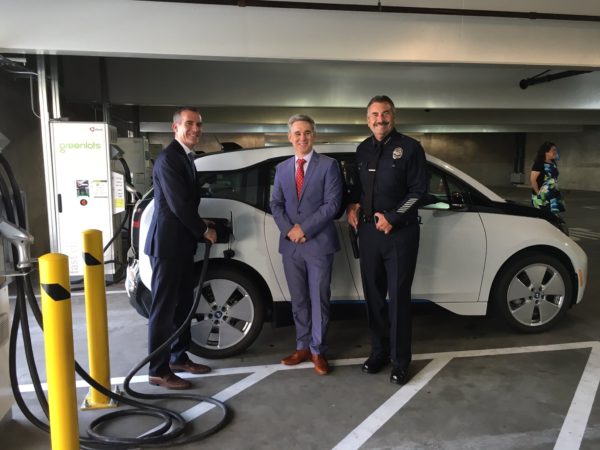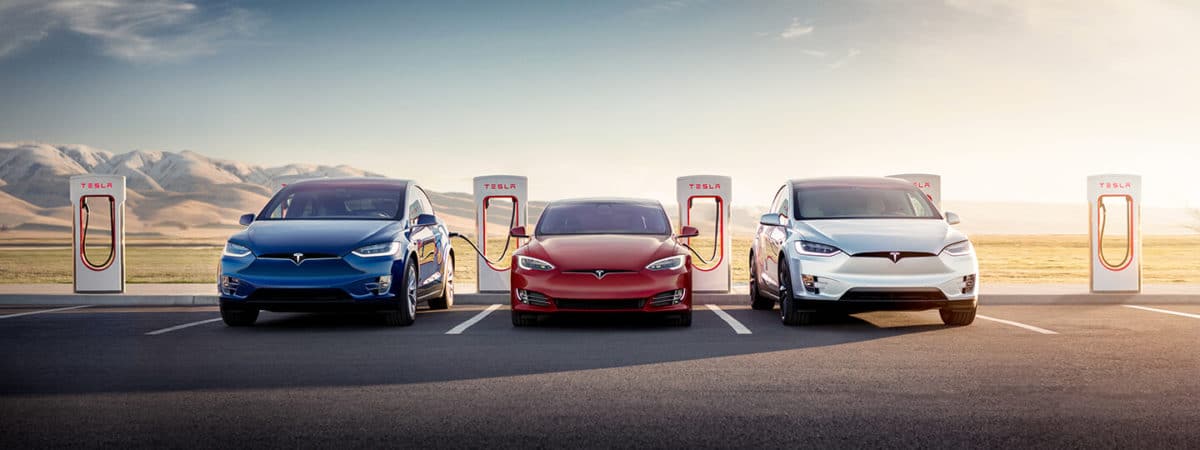In the far past, and maybe for presidents and autocrats these days, there was a food taster. They take a risk for the greater good. The solar industry had the off-grid people in Western Massachusetts first, then Germany and California concurrently spending the big money up front – taking the economic risk for the greater good.
Burns & McDonnell is an employee-owned, Kansas City-based firm made up of more than 6,000 engineers, architects, construction professionals, scientists, and consultants.
The company already covers 100% of the electricity of the employee-owners that charge their EVs on-site. Now, they’re installing a Greenlots EV charging network on campus. The unit is being into Burns & McDonnell’s “open standards electric vehicle supply equipment (EVSE) to provide real-time visibility into the network and allow for charging data collection”. The new system will add Level 2 charging stations, and will add to an already existing charging network on campus.

Greenvolts
While the data will be fed to employee-owners to monitor progress as their own vehicles charge, or, if waiting in line, see which stations may be available soon – the broader mission shifts this from being an employee-owner benefit t0 a business initiative.
Charging data from Greenlots ‘SKY’ operating system will also be analyzed for predictive modeling within a new Burns & McDonnell “Integration and Automation Lab” that was created to enable real-time testing of advanced equipment that utilities are incorporating into their power grids.
A separate group, the “Business Intelligence and Analytics” team, will experiment with new methods of customer interactions. The results will drive solutions for electric utility clients, cities, EVSE solution providers, automakers, and a range of other large commercial and industrial clients who are deploying charging infrastructure at scale.
There is a significant possibility that our electricity grids will integrate significant volumes of electric vehicle batteries – there’s even a chance the grid becomes dependent on our stored transportation energy. Research has suggested that 12 hours of energy storage is enough to get the USA to 80% solar+wind. That’s about 100 million EVs with batteries the size of a Tesla Model 3 – and we’ve got over 260 million vehicles in total.
Since we already know we just can’t plug in 260 million vehicles, plenty of researchers (for instance Burns & McDonnell and Greenlots) have worked with utilities on strategies to mitigate this effect. The Department of Energy recently released a report saying EVs strategically charging could save billions when dealing with California’s solar power induced duck curve as the state deploys up to 3 GW further of energy storage by 2026.
And while some might scoff at the idea of using their car battery for a power grid component for fear of wearing down the battery – Tesla’s data is suggesting cars can go greater than 500,000 miles on their battery packs. If this data is verified broadly, there will be financial plays to take advantage of this immense resource as there have already been pilots where car owners were paid for using their batteries.
This content is protected by copyright and may not be reused. If you want to cooperate with us and would like to reuse some of our content, please contact: editors@pv-magazine.com.








By submitting this form you agree to pv magazine using your data for the purposes of publishing your comment.
Your personal data will only be disclosed or otherwise transmitted to third parties for the purposes of spam filtering or if this is necessary for technical maintenance of the website. Any other transfer to third parties will not take place unless this is justified on the basis of applicable data protection regulations or if pv magazine is legally obliged to do so.
You may revoke this consent at any time with effect for the future, in which case your personal data will be deleted immediately. Otherwise, your data will be deleted if pv magazine has processed your request or the purpose of data storage is fulfilled.
Further information on data privacy can be found in our Data Protection Policy.